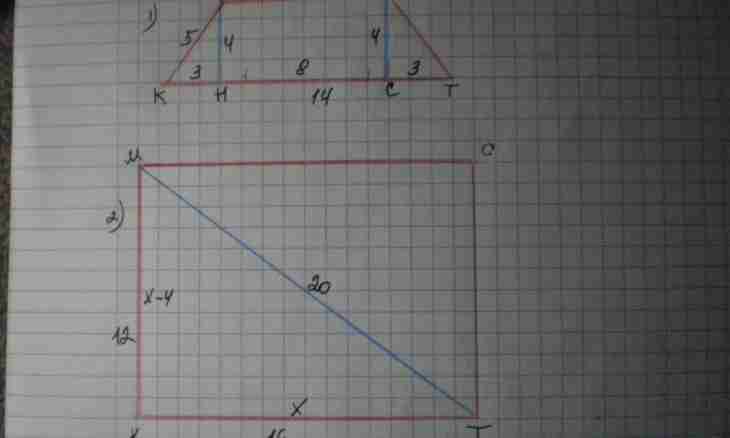The trapeze represents a quadrangle at which couple of parties are parallel among themselves. These parties are the trapeze bases. Diagonal is the piece connecting pair of opposite tops of corners of a trapeze among themselves. Knowing its length, it is possible to find trapeze height.
It is required to you
- Calculator
Instruction
1. Height of a trapeze can be expressed through diagonal only if this trapeze is rectangular. The rectangular trapeze differs from usual in the fact that at it one of sides is crossed with the bases at right angle. It means that its length coincides with figure height. Knowing the diagonal and length of the basis, it is possible to calculate height.
2. Let the rectangular trapeze of ABCD which has AD - height, DC - the basis, and AC - diagonal is given. According to Pythagorean theorem, the square of a hypotenuse of a rectangular triangle is equal to the sum of squares of its legs. The triangle of ABC is rectangular in which AC is a hypotenuse, and the parties of AB and BC are legs. Then on the theorem given above: AC² = AD² + DC².AB is not just a leg or side. It also height because the piece is perpendicular to both bases. Then its length will be expressed thus: AB = √ (AD² - DC²)
3. For bigger clarity it is possible to review an example: At a rectangular trapeze length of the basis is 14 cm, and length of the diagonal of 15 cm, is required to find out length of height/side. For this purpose, according to Pythagorean theorem, the equation is worked out: 15² = 14² + x², where x - the unknown from legs of a rectangular triangle; x = √ (15²-14²) = √ (225-196) = √29 smotvt: length of height of a rectangular trapeze is √29 cm or, about, 5.385 cm
4. There are several types of trapezes. Besides described above rectangular, there is also an isosceles trapeze at which sides are equal among themselves. If through the middle of the bases of this trapeze to draw a straight line, then it is an axis of its symmetry. In addition, corners at the bases and diagonal are equal in an isosceles trapeze. Around an isosceles trapeze it is possible to describe a circle which will concern all its tops.
